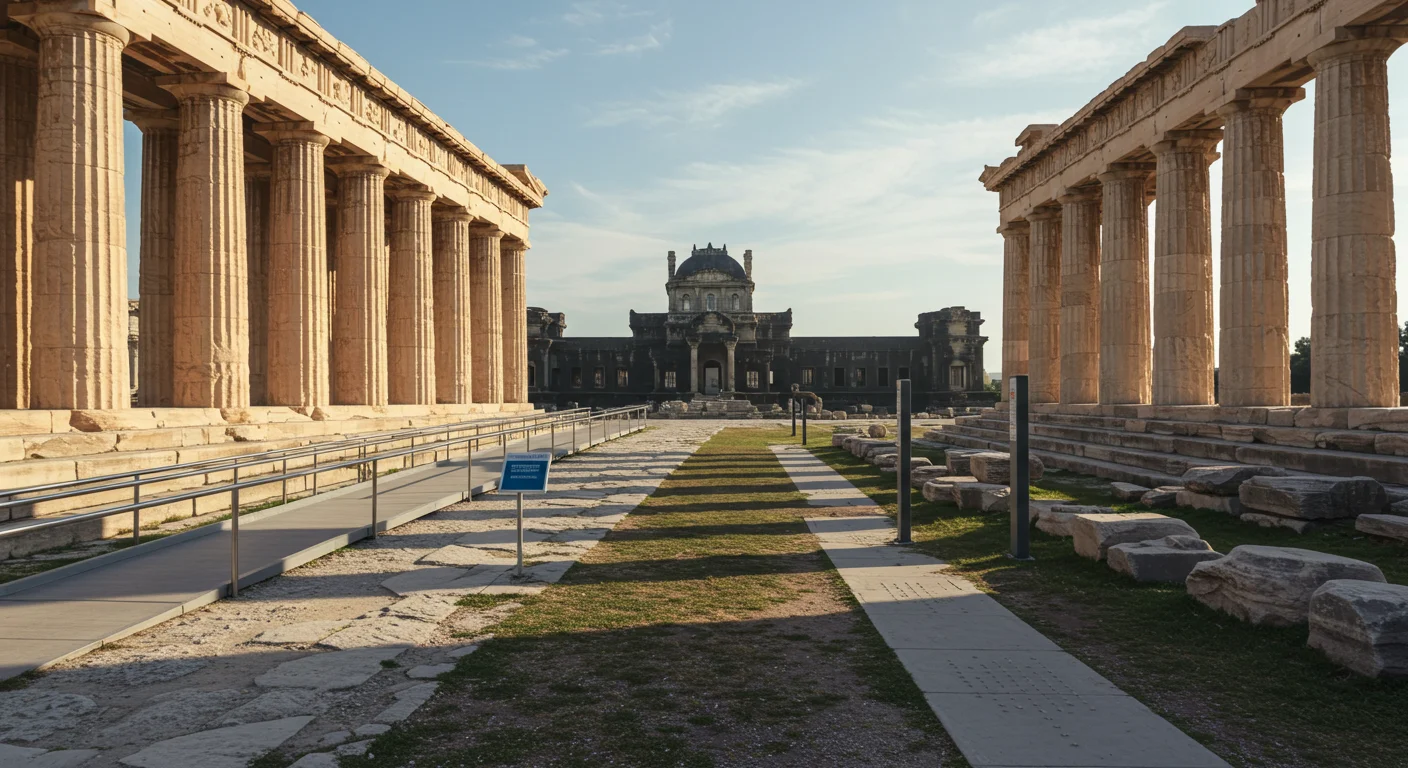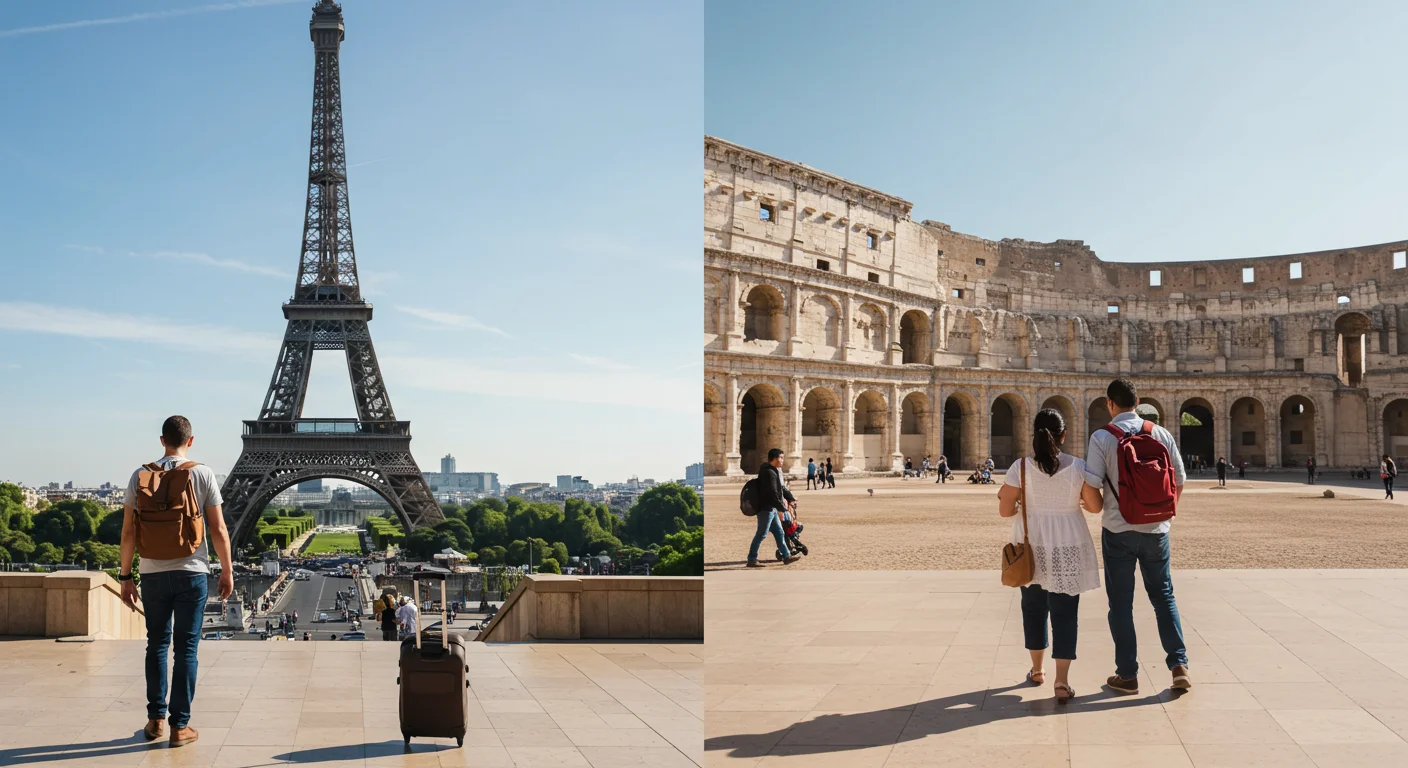Imagine stepping into a museum, zoo, or theater, ready to explore new ideas and engage with fascinating exhibits. Now imagine not being able to fully experience it because of a barrier. This is why understanding Accessibility at Cultural Landmarks: What to Know is so vital. These spaces are important for community connection and expanding our minds, and they should be welcoming for every person, regardless of their abilities. Making cultural landmarks accessible means creating a joyful and barrier-free experience for everyone.
Beyond Just Ramps: What True Accessibility Means
When we talk about accessibility, many people immediately think of ramps for wheelchairs. While physical access is a huge part of it, true accessibility at cultural landmarks goes much deeper. It involves thinking about access in a complete way: physical, emotional, and intellectual. This means moving beyond just allowing entry, to making sure every visitor can comfortably and meaningfully experience all that a cultural space has to offer. Organizations like The Ability Center and the Toledo Museum of Art actively promote this comprehensive approach, highlighting that it is a shared responsibility for all cultural space managers.
The starting point for accessibility often comes from guidelines like the 2010 ADA Standards for Accessible Design. These standards cover things like door widths, handle types, and steps at entrances. Older buildings, which many cultural spaces are, can present unique challenges because they might have narrow doors or steep marble stairways. For buildings with multiple floors, it is important to have elevators easily reachable along the main path to ensure everyone can move throughout the entire building. It is not enough to simply have these features available; they must be easily found and integrated into the visitor experience.
Physical Access: Getting Around Inside and Out
Think about how you move through a space. Are the paths easy to follow? Are there places to rest? For cultural landmarks, paths must accommodate everyone. They should clearly connect parking areas, entrances, and all the important features and exhibits. For example, a museum route should let guests fully experience an exhibit, and a zoo path should allow visitors to see all the animals and attractions. To ensure comfortable visits, many places provide assistive devices.
- Wheelchairs and electronic scooters: Available for patrons to use comfortably.
- Accessible seating: In places like theaters or auditoriums, accessible seating and companion seating must offer an equal view of the event. These seats should be spread throughout the space to ensure equal engagement.
- Ramps and elevators: Crucial for overcoming steps and accessing multiple floors, especially in older buildings where historic elements might pose challenges.
- Spacious areas: Sufficient room for wheelchair users to navigate freely in galleries, cafeterias, restrooms, and shops.
- Lowered counters: Information desks, restaurant counters, and shop counters should be lowered for easy access.
This broad view of physical accessibility ensures that everyone can participate fully in the experience, enhancing their connection to the culture and history presented. Understanding Accessibility at Cultural Landmarks: What to Know requires attention to these details.
Navigating the Space: Wayfinding and Exhibit Design
Finding your way around a large cultural space can be tricky for anyone, but especially for visitors with disabilities. This is where good wayfinding comes in. Clear signage is essential, telling guests where they are, what exhibits are nearby, and where to find exits and restrooms. Wayfinding also includes subtle but important details like good lighting and strong color contrasts between furniture and walls, which can greatly assist visitors with low vision. Many modern cultural spaces offer electronic materials, such as mobile app maps or descriptive website maps, that highlight accessible routes, elevators, and places to rent assistive devices. These digital tools are invaluable for planning a visit and navigating during it.
The exhibits themselves must also be designed with accessibility in mind. An accessible building is not much help if the displays cannot be enjoyed by everyone. Exhibits should be set up along accessible routes to ensure the full experience is available to all. Display heights are important; for instance, the Toledo Museum of Art hangs exhibits at 57 inches to work well for both standing and seated guests. In zoos, this might mean lowering fences and barriers so animals can be seen easily from a seated height. The goal is for displays to be visible from various heights and distances, making the content enjoyable for all.
- Tactile elements: Providing objects or models that visitors can touch helps those with visual impairments experience art and artifacts.
- Audio descriptions: Offering detailed verbal descriptions of visual content for blind guests, often through audio guides or mobile apps.
- Interactive technologies: Engaging displays that cater to various sensory needs, often incorporating touch, sound, or haptic feedback.
- Raised QR codes: QR codes with a slight relief can be found by touch, linking to audio descriptions for blind visitors.
- Braille labeling: Labels in Braille complement visual text, though museums also understand that a small percentage of blind visitors read Braille, so multiple formats are best.
- 3D printed specimens or tactile paintings: Allowing visitors to feel the form and texture of objects or artworks.
Communicating Clearly: Information for Everyone
Effective communication is a core requirement of accessibility laws. This means providing information to disabled guests just as effectively as to non-disabled individuals. Signs and labels should use large, bold characters with strong color contrast and simple, plain language for easy reading and understanding. Keeping text concise, with one idea per sentence and about 55 characters per line, helps readability. Any specialized words or jargon should be explained right where they are introduced.
Offering information in different ways is key to accommodating various disabilities. This ensures that every guest can fully understand and engage with the content. Here are some examples:
- For blind and visually impaired visitors:
- Materials in large print and braille.
- Audio descriptions that verbally paint a picture of visual content.
- Verbal descriptions provided by trained staff.
- Digital applications with VoiceOver and TalkBack screen reader compatibility.
- For deaf and hearing impaired visitors:
- Written transcripts for audio components.
- Captioning for videos and presentations.
- American Sign Language (ASL) interpreters.
- Assistive listening devices and audio induction loops.
- Digital applications with a focus on text descriptions and icons.
- Accessible digital content:
- Subtitled videos and visual contrast on websites.
- Alternatives to CAPTCHAs that are difficult for blind individuals.
- Screen reader-friendly websites and online ticket platforms.
It is always best to offer multiple options and respect the visitor's choice. This comprehensive approach to communication is a fundamental part of Accessibility at Cultural Landmarks: What to Know.
Beyond the Physical: Emotional and Intellectual Accessibility
True inclusivity goes beyond physical structures. It involves ensuring that all stories connected to a cultural landmark are told. Historically, many sites focused only on well-known figures or majority groups, but visitors today want to connect with a complete and honest history. This means broadening the narrative to include perspectives of underrepresented or marginalized individuals, like enslaved people or indigenous communities. For example, at Arlington House, a support building once used for enslaved people was restored and reinterpreted to tell their story, offering a more comprehensive understanding of the site.
To truly make cultural sites inclusive, it is essential to involve the public in deciding what stories and areas of interest should be highlighted. This means working with a wide range of people, including historians, community leaders, descendants of those connected to the site, and importantly, people with disabilities. Their lived experiences provide valuable insights for practical and innovative solutions. This co-design process ensures that efforts to exceed minimum accessibility requirements result in a truly transformative visitor experience. This collaborative spirit is central to improving Accessibility at Cultural Landmarks: What to Know.
Creating comfortable environments also means providing plenty of seating for visitors who might experience fatigue, including older guests or those with invisible conditions. Many museums also offer quiet spaces or schedule special low-sensory hours, which are especially helpful for visitors on the autism spectrum or those with dementia. These initiatives show a deep understanding of diverse needs and enhance the emotional comfort of all guests.
In our increasingly digital world, accessibility extends to websites, virtual events, and online collections. Websites must be easy for everyone to navigate, including those who use screen reader technology. Online ticket sales and virtual tours must also be accessible, often requiring captions for audio, audio descriptions, and compatibility with various accessibility tools. Some museums use advanced technology like customized phone applications that offer navigation assistance, audio and visual cues, haptic feedback, and even augmented reality (AR) or virtual reality (VR) experiences to immerse visitors and provide new ways to interact with exhibits, especially for those with limited mobility. These innovations significantly advance Accessibility at Cultural Landmarks: What to Know by providing diverse engagement methods.
Conclusion: A Culture for All
Making cultural landmarks accessible is an ongoing journey that requires continuous effort, creativity, and collaboration. It is about embracing universal design principles from the very beginning of any project, ensuring that inclusion is built into the foundation. By focusing on physical access, clear communication, intuitive wayfinding, and telling a complete story that includes all voices, cultural institutions can create truly welcoming and enriching environments for everyone.
It is important for cultural institutions to promote their commitment to accessibility on their websites, highlighting available accommodations and assistive devices. Showcasing the contributions of people with disabilities within the cultural space, through art or historical narratives, educates all guests and represents a marginalized community. As visitors, we can also support institutions that prioritize accessibility and encourage others to adopt these best practices. Let us all work together to ensure that the beauty, history, and wonder of our cultural landmarks are truly accessible to all.




